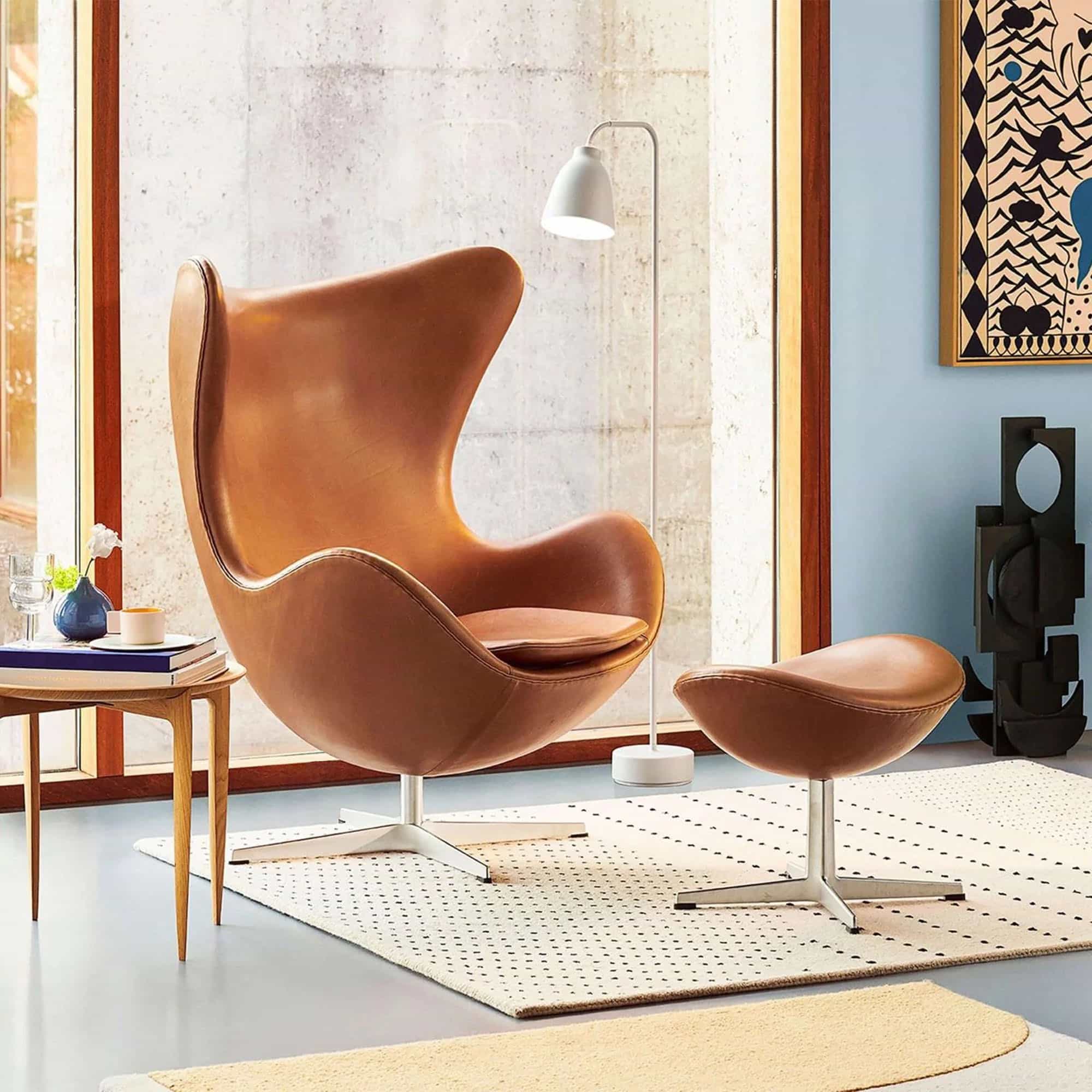Scandinavian design is renowned for its minimalist approach, functionality, and emphasis on simplicity and nature. It prioritizes clean lines, organic shapes, and natural materials. These principles heavily influenced the design of the Egg Chair, which embodies the essence of Scandinavian design.
Scandinavian design emerged in the mid-20th century as a response to the industrialization and mass production that characterized the era. It sought to create functional and aesthetically pleasing designs that improved the quality of life. This design philosophy aligned perfectly with the vision of Arne Jacobsen when he created the Egg Chair in 1958.
Organic Form and Minimalism
The Egg Chair’s organic and sculptural form is a direct reflection of the Scandinavian design philosophy. Inspired by the shape of an egg, the chair’s curves and contours mimic the natural forms found in the environment. This design approach aligns with the Scandinavian belief in harmonizing with nature and bringing elements of the outdoors into interior spaces.
Additionally, the Egg Chair’s minimalistic aesthetics, with its clean lines and absence of unnecessary ornamentation, further exemplify the influence of Scandinavian design. This simplicity allows the chair to seamlessly blend into a variety of interior styles, from modern to rustic, without overpowering the overall design scheme.
Use of Natural Materials
Scandinavian design places great importance on the use of natural materials, and this is evident in the construction of the Egg Chair. The original design featured a molded fiberglass inner frame, which provided strength and stability while also allowing for the chair’s iconic shape. Fiberglass was chosen for its lightweight properties and ability to be molded into complex forms.
However, in contemporary interpretations of the Egg Chair, alternative materials such as wood and metal have been introduced. Wood, particularly plywood or solid wood, showcases the natural beauty and warmth characteristic of Scandinavian design. Metal versions, often made from steel or aluminum, offer a sleek and modern aesthetic.
The use of these natural materials not only adds visual appeal but also reinforces the connection to nature that is integral to Scandinavian design.
Functionality and Practicality
Scandinavian design places a strong emphasis on functionality and practicality, and the Egg Chair embodies these principles. The chair’s ergonomic design and high sides provide a sense of privacy and tranquility, allowing users to retreat and relax. The curved backrest offers optimal lumbar support, promoting proper posture and reducing strain on the body.
The matching ottoman adds an extra level of functionality by providing a place to rest one’s feet or even serve as an additional seating option. This versatility adds to the chair’s practicality and usability in various settings.
Furthermore, Scandinavian design also values versatility and adaptability, and the Egg Chair showcases these qualities. Its timeless design allows it to seamlessly integrate into a variety of interior spaces, from residential homes to commercial settings. The chair’s ability to serve as both a statement piece and a comfortable seating option demonstrates its functional versatility.
In conclusion, the Egg Chair’s design is deeply rooted in the principles of Scandinavian design. Its organic form, minimalistic aesthetics, use of natural materials, and emphasis on functionality reflect the influence of Scandinavian design philosophy. The chair’s ability to effortlessly blend into various interior styles while providing comfort and elegance is a testament to the timeless appeal and enduring influence of Scandinavian design.
Whether in a modern Scandinavian-inspired space or a more eclectic interior, the Egg Chair remains a beloved symbol of the beauty and functionality intrinsic to Scandinavian design. Its enduring popularity and timeless design are a testament to the influence it has had on the world of interior design, solidifying Scandinavian design as a significant force in the industry.
